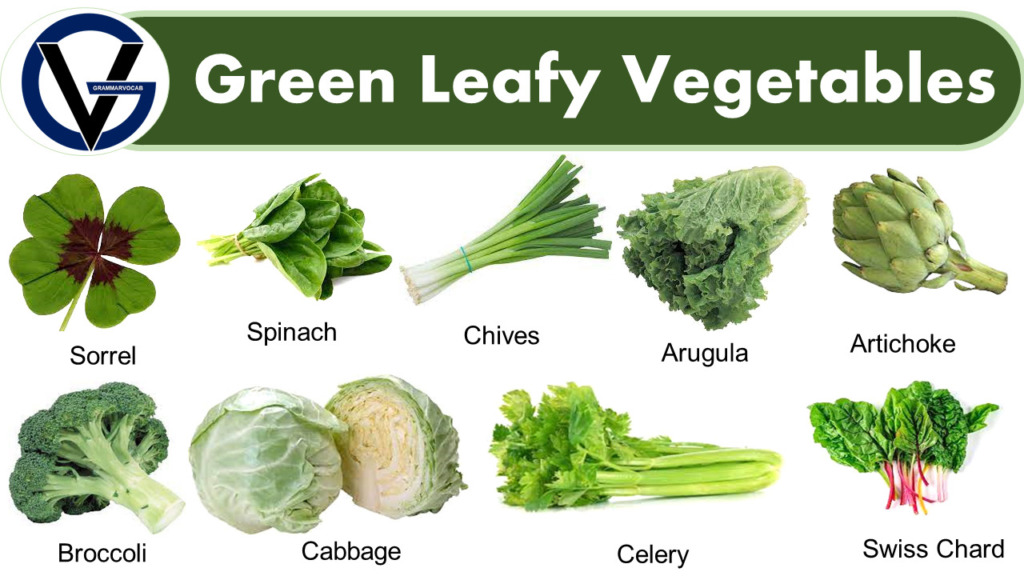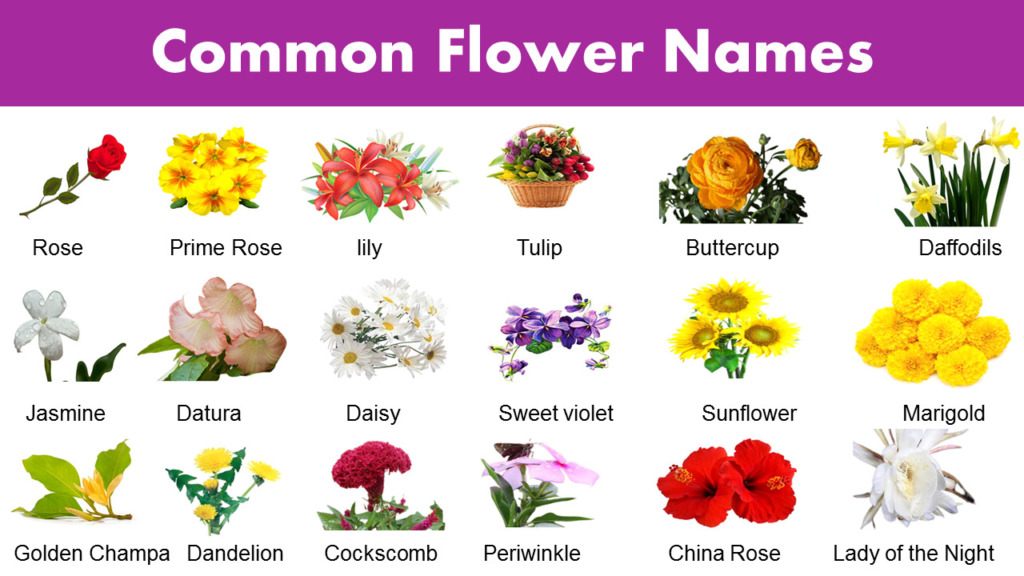Welcome to our comprehensive guide on green leafy vegetables! If you’re looking to boost your health and add a burst of nutrition to your meals, you’ve come to the right place. In this article, we have curated a diverse list of green leafy vegetables that are not only delicious but also packed with essential vitamins, minerals, and antioxidants. So, let’s dive in and explore the wonderful world of green leafy vegetables.
Download Green Leafy Vegetables Pictures PDF
Leafy Vegetable Name With Pictures

Green Vegetable Names
Here is a comprehensive list of popular green leafy vegetables names:
- Garden cress
- Spinach
- Rapini
- Cabbage
- Asparagus
- Radicchio
- Purslane
- Sorrel
- Fiddlehead greens
- Water spinach
- Watercress
- Fennel greens
- Swiss chard
- Punarnava
- Parsley
- Coriander
- Celery
- Stinging nettle
- Broccoli
- Beet greens
- Amaranth leaves
- Romaine
- Drumstick greens
- Grass pea leaves
- Dill leaves
- Endive
- Collard greens
- Turnip greens
- Iceberg
- Kale
- Roselle leaves
- Fenugreek
- Chives
- Leek
- Mache
- Mustard greens
- Mint
- Sweet basil
- Perilla
- Saluyot leaves
- Arugula
- Artichoke
- Chinese cabbage
- Spring onion
- Curry leaves
Health Benefits of Green Leafy Vegetables
Green leafy vegetables are incredibly nutritious and offer numerous health benefits. Here are some of the key advantages of incorporating green leafy vegetables into your diet:
- Rich in Nutrients: Green leafy vegetables, such as spinach, kale, Swiss chard, and collard greens, are packed with essential vitamins and minerals. They are excellent sources of vitamin A, vitamin C, vitamin K, folate, iron, calcium, and potassium.
- Antioxidant Power: Green leafy vegetables are abundant in antioxidants, including beta-carotene, lutein, and zeaxanthin. These compounds help protect your cells from damage caused by harmful free radicals, reducing the risk of chronic diseases like heart disease, cancer, and age-related macular degeneration.
- Heart Health: The high levels of potassium, folate, and antioxidants found in green leafy vegetables contribute to heart health. They can help lower blood pressure, reduce inflammation, improve blood vessel function, and decrease the risk of heart disease.
- Bone Health: Green leafy vegetables are excellent sources of calcium and vitamin K, both of which are essential for maintaining strong and healthy bones. Adequate calcium intake is necessary for bone density, and vitamin K helps improve calcium absorption and promotes bone formation.
- Digestive Health: The fiber content in green leafy vegetables supports a healthy digestive system. It aids in maintaining regular bowel movements, prevents constipation, and promotes a healthy gut microbiome.
- Weight Management: Green leafy vegetables are low in calories and high in fiber, making them an ideal addition to a weight management plan. The fiber helps you feel full, reducing the chances of overeating, while the low-calorie content allows you to consume larger portions without excessive caloric intake.
- Eye Health: The carotenoids, particularly lutein and zeaxanthin, found in green leafy vegetables have been linked to a reduced risk of age-related macular degeneration and cataracts. These compounds protect the eyes from damage caused by oxidative stress and harmful UV rays.
- Blood Health: The iron and folate content in green leafy vegetables contribute to healthy blood. Iron is essential for the production of red blood cells, while folate plays a crucial role in the formation of new cells, including red blood cells.
- Skin Health: The combination of vitamins A and C, as well as antioxidants, in green leafy vegetables helps promote healthy skin. They assist in collagen production, protect against sun damage, and contribute to a youthful appearance.
- Anti-Inflammatory Properties: Many green leafy vegetables possess anti-inflammatory properties due to their high antioxidant content. Regular consumption can help reduce chronic inflammation, which is associated with various diseases, including heart disease, diabetes, and certain types of cancer.
Must Learn: All Vegetable Names
Green Leafy Vegetables Pictures



























FAQ Related to Green Leafy Vegetables
What is a green leafy vegetable?
Leafy greens are vegetable-like plant leaves that are occasionally paired with stems or stalks. Their name comes from the color of their skin, which is green. Spinach, kale, and mustard greens are examples of leafy greens.
How do you eat leafy greens?
- Prepare them independently. Arugula or beet greens make a great side dish on their own.
- Toss them in. Whether you’re making an omelet or cooking soup, blending a smoothie, etc.
- Make Pureed Soup
- Make a Green Smoothie
- Make Green Juice
- Make a Spinach pizza
- Add Arugula to a Breakfast Pizza
- Try Cooking Asian Greens
- Add Spinach to a Frittata
What veggies are high in iron?
Leafy greens like kale, spinach, collard, and beet greens have between 2.5 and 6.4 mg of iron per cooked cup, which is 14–36 percent of the RDA.
How many green leafy vegetables are there?
Depending on the region and season, at least 80 various greens are used, including Wild sorrel, wild leeks, smooth sow thistle, mallow, lamb’s quarters, kale, hoary mustard, fennel, dandelion, chicory, charlock, chard, black nightshade, black mustard, and even fresh caper leaves.
Leafy Green Vegetable’s Health Benefits
Green leafy vegetables are high in vitamins, fiber, antioxidants, minerals, and other nutrients, making them an important part of a balanced diet. Green leafy vegetables are high in practically all of the nutrients that the human body requires to function correctly.



